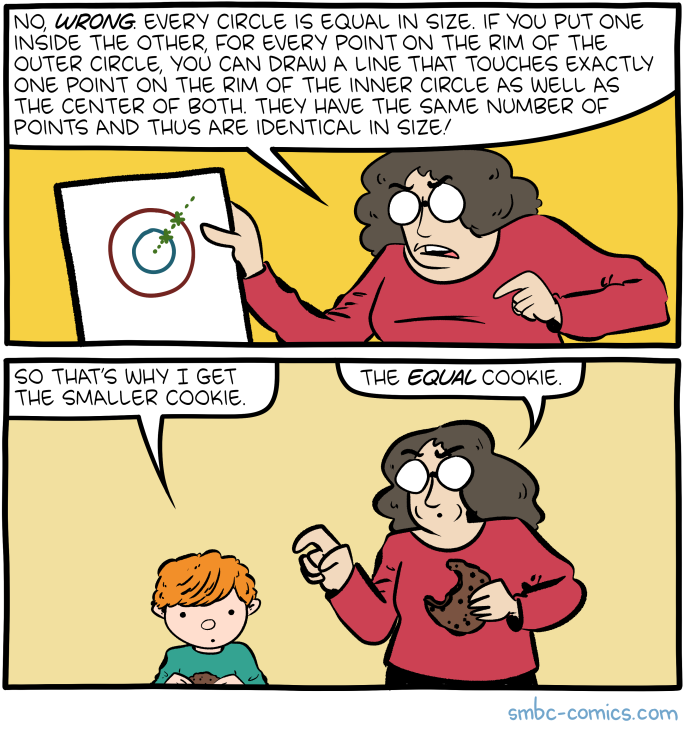this post was submitted on 28 Sep 2023
63 points (86.2% liked)
Share Funny Videos, Images, Memes, Quotes and more
2502 readers
132 users here now
#funny
founded 4 years ago
MODERATORS
you are viewing a single comment's thread
view the rest of the comments
view the rest of the comments

Isn't a circle's size dictated as a function of its radius?
So it wouldn't matter if any line could be drawn which radiates from the center and intersects the same point on both circles unless both points were an equal distance from the center.
Sure, it's been some time since I've had to think about this so some terminology may be off.
The comic is saying that since every point on the inner circle can correspond to a unique point on the outer circle, that they're the same size. For that to be true there must be also be a way to map every point on the outer circle to the inner circle.
For instance, take one single point and a massive, massive circle. For that one point, you can draw a line out of it directly to a point on the massive circle. However, if you try to map the points in the larger circle to a unique point on the single point, you can't. There's just one.
It may be easier to visualize if you make the circles into line segments.
See the thing is we're talking about points
Zero dimensional locations on the circle's edge.
Between two scalar related shapes, any point you can find on one you'd be able to identify an equivalent on the other, because the exact point itself does not have a segment size.
Ergo, any two shapes with proportionate dimensions ought to be considered the same size under the comic's schema.
This is my proof that a proton is exactly the same size as TON 618, the largest single object currently known in the universe, a black hole so large our solar system would fit within it several times over. Not the sun, the entire solar system.
Both are spherical in perception, ergo any point identified on one will have a corresponding point identifiable on the other.
Radius be damned we live in a world of light-year sized protons!
Right. A circle is uniquely defined by an arbitrary point C and Ray of length 'r'. If and only if, 'r' is the same, they are equal circles.